FRAGONARD
The Artist and the Literature of Travel
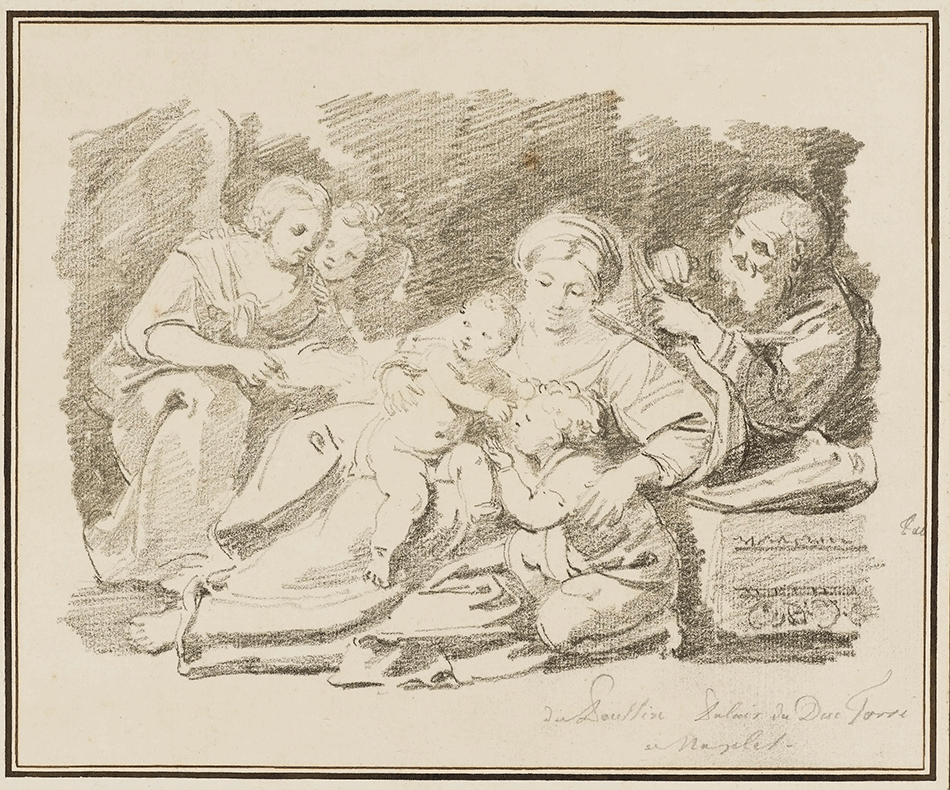 Jean-Honoré Fragonard (French, 1732–1806), Study after Nicolas Poussin: Holy Family (from the Della Torre Palace, Naples), 1760–61, Black chalk on paper, sheet: 13 x 17-3/4 in. (33.02 x 45.01 cm), The Norton Simon Foundation
Jean-Honoré Fragonard (French, 1732–1806), Study after Nicolas Poussin: Holy Family (from the Della Torre Palace, Naples), 1760–61, Black chalk on paper, sheet: 13 x 17-3/4 in. (33.02 x 45.01 cm), The Norton Simon Foundation
60 drawings presented on Norton Simon Museum
Created by a young Jean-Honoré Fragonard (French, 1732–1806) during his first and most important stay in Italy in the mid-18th century. These exquisite works document Fragonard’s voyage to see the great artistic treasures of Florence, Bologna, and Padua, among other cities.
Fragonard’s Enterprise exhibition explores the excitement of this expedition, the documentary and practical value of the drawings, and their history following publication, especially as they were treasured by later collectors. Before Fragonard ascended to the ranks of one of the 18th century’s most popular painters, he studied at the French Academy in Rome, where he practiced the fundamental art of drawing as a method to hone his skills and to establish his own unique style.
Fragonard and his first patron:
Jean Claude Richard de Saint-Non
In Rome, he encountered his first patron, Jean Claude Richard de Saint-Non (1727–1791). A passionate advocate of the arts, Saint-Non was an eager participant in the Grand Tour, the educational pilgrimage to Italy then in vogue throughout Europe. His voyage, made from 1759 to 1761, inspired him to chronicle this experience for an audience that shared his fascination with the peninsula. Saint-Non invited the young Fragonard to join in his tour through Italy’s illustrious cities. In exchange, Fragonard was tasked with making copies after the important paintings and monuments to be seen in the churches and palazzi. The black chalk drawings Fragonard produced for his sponsor served as source material for Saint-Non’s engravings and aquatints, which were published in suites, and in his illustrated travel book Voyage pittoresque de Naples et de Sicile (1781–86). These immensely popular publications served as barometers of taste for the arts, and as beloved reminders of the masterpieces visited.
Exhibition Highlights
Enthusiasm for classical antiquity and Neapolitan Baroque painting drew many tourists to Naples. Saint-Non enjoyed multiple visits to the city, and during Fragonard’s visit in March 1761, he created inspired copies after the masterpieces he visited in private and public spaces. Occasionally he combined subjects from different locations on one sheet of paper.
 Jean-Honoré Fragonard (French, 1732–1806), Study After Jusepe de Ribera: St. Luke Surrounded by Angels (from the Church of the Holy Apostles); Study After Jusepe de Ribera: Prophets (from the Church of Certosa di San Martino), 1760-61, Black chalk on paper, 17-3/4 x 13 in. (45.1 x 33.0 cm), The Norton Simon Foundation
Jean-Honoré Fragonard (French, 1732–1806), Study After Jusepe de Ribera: St. Luke Surrounded by Angels (from the Church of the Holy Apostles); Study After Jusepe de Ribera: Prophets (from the Church of Certosa di San Martino), 1760-61, Black chalk on paper, 17-3/4 x 13 in. (45.1 x 33.0 cm), The Norton Simon Foundation
On the same sheet, Fragonard flanked Luke’s figure with two prophets that caught his attention at the Certosa di San Martino, painted by the Spaniard Jusepe de Ribera. The result of this imaginative pastiche is so fluid that few would suspect it was a combination drawing.
With its sunlit canals and magnificent architecture, Venice proved irresistible to the Grand Tourist. Fragonard and Saint-Non passed more than a month there. Inspired by Titian, Tintoretto and Veronese, the French artist produced lively, free-spirited copies, as evidenced in his Study after Paolo Veronese’s Adoration of the Magi, 1582, from the Church of San Nicolò della Lattuga ai Frari. Fragonard shifted Veronese’s vertical format to a horizontal one, and deemphasized the architecture to concentrate on the rhythmic interweaving of the figures that he must have admired in the original.
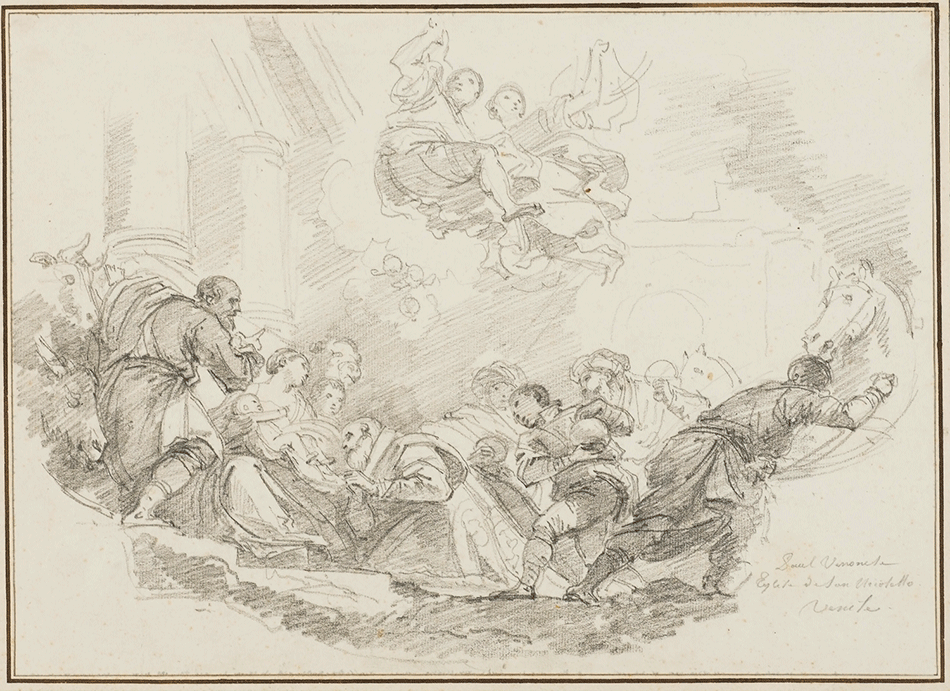 Jean-Honoré Fragonard (French, 1732–1806), Study After Paolo Veronese: Adoration of the Magi (from the San Niccolo della Lattuga ai Frari), 1760-61, Black chalk on paper, 17-3/4 x 13 in. (45.1 x 33.0 cm), The Norton Simon Foundation
Jean-Honoré Fragonard (French, 1732–1806), Study After Paolo Veronese: Adoration of the Magi (from the San Niccolo della Lattuga ai Frari), 1760-61, Black chalk on paper, 17-3/4 x 13 in. (45.1 x 33.0 cm), The Norton Simon Foundation
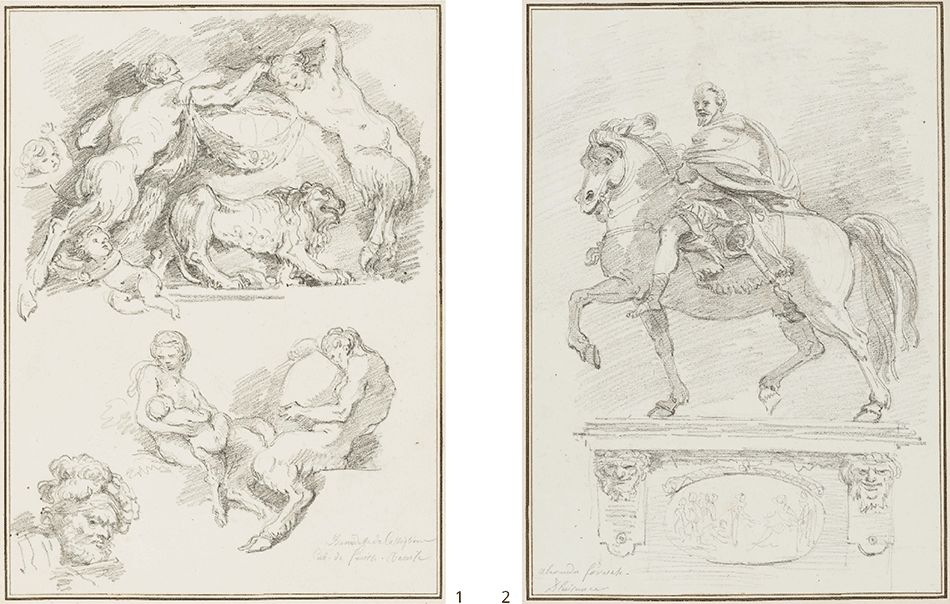 1. Jean-Honoré Fragonard (French, 1732–1806), Study after Giovanni Benedetto Castiglione: Four Groups of Fauns (from the Collection of Console Smith, Venice), 1760–61, Black chalk on paper, 17-3/4 x 13 in. (45.1 x 33.0 cm), The Norton Simon Foundation2. Jean-Honoré Fragonard (French, 1732–1806), Study after Francesco Mochi: Equestrian Statue of Alessandro Farnese (from the Piazza dei Cavalli, Piacenza), 1760–61, Black chalk on paper, 17-3/4 x 13 in. (45.1 x 33.0 cm), The Norton Simon Foundation
1. Jean-Honoré Fragonard (French, 1732–1806), Study after Giovanni Benedetto Castiglione: Four Groups of Fauns (from the Collection of Console Smith, Venice), 1760–61, Black chalk on paper, 17-3/4 x 13 in. (45.1 x 33.0 cm), The Norton Simon Foundation2. Jean-Honoré Fragonard (French, 1732–1806), Study after Francesco Mochi: Equestrian Statue of Alessandro Farnese (from the Piazza dei Cavalli, Piacenza), 1760–61, Black chalk on paper, 17-3/4 x 13 in. (45.1 x 33.0 cm), The Norton Simon Foundation
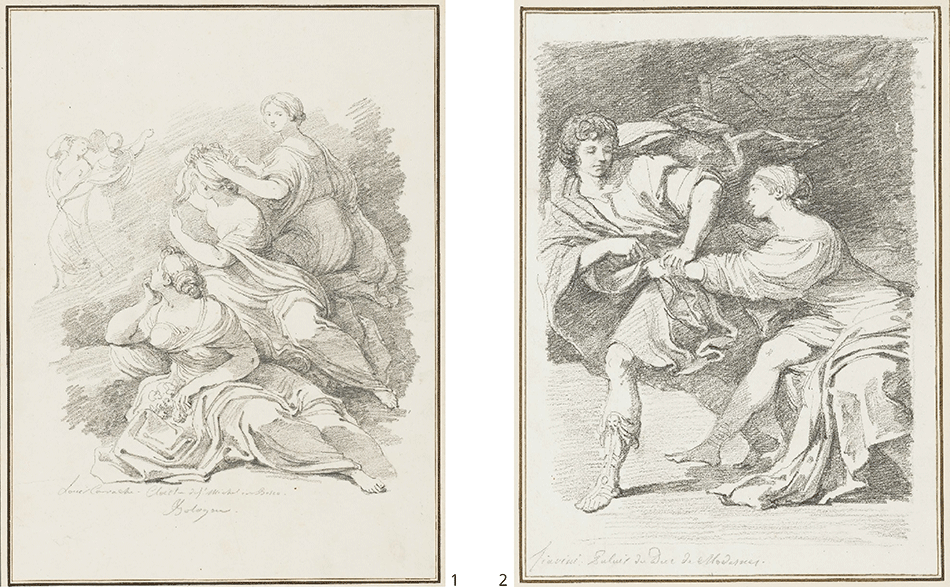 1. Jean-Honoré Fragonard (French, 1732–1806),Study after Ludovico Carracci: Group of Three Seated Women (from the Cloister of San Michele in Bosco, Bologna), 1760–61, Black chalk on paper, 17-3/4 x 13 in. (45.1 x 33.0 cm), The Norton Simon Foundation2. Jean-Honoré Fragonard (French, 1732–1806), Study after Lionello Spada: Joseph and Potiphar’s Wife (from the Palazzo Ducale, Modena),1760–61, Black chalk on paper, 17-3/4 x 13 in. (45.1 x 33.0 cm), The Norton Simon Foundation
1. Jean-Honoré Fragonard (French, 1732–1806),Study after Ludovico Carracci: Group of Three Seated Women (from the Cloister of San Michele in Bosco, Bologna), 1760–61, Black chalk on paper, 17-3/4 x 13 in. (45.1 x 33.0 cm), The Norton Simon Foundation2. Jean-Honoré Fragonard (French, 1732–1806), Study after Lionello Spada: Joseph and Potiphar’s Wife (from the Palazzo Ducale, Modena),1760–61, Black chalk on paper, 17-3/4 x 13 in. (45.1 x 33.0 cm), The Norton Simon Foundation
 1. Jean-Honoré Fragonard (French, 1732–1806), Study after Prospero Sponi: Mausoleum of the Jurist Bartolomeo Prati Crypt (Parma Cathedral), 1760–61, Black chalk on paper, sheet: 13 x 17-3/4 in. (33.02 x 45.01 cm), The Norton Simon Foundation
1. Jean-Honoré Fragonard (French, 1732–1806), Study after Prospero Sponi: Mausoleum of the Jurist Bartolomeo Prati Crypt (Parma Cathedral), 1760–61, Black chalk on paper, sheet: 13 x 17-3/4 in. (33.02 x 45.01 cm), The Norton Simon Foundation
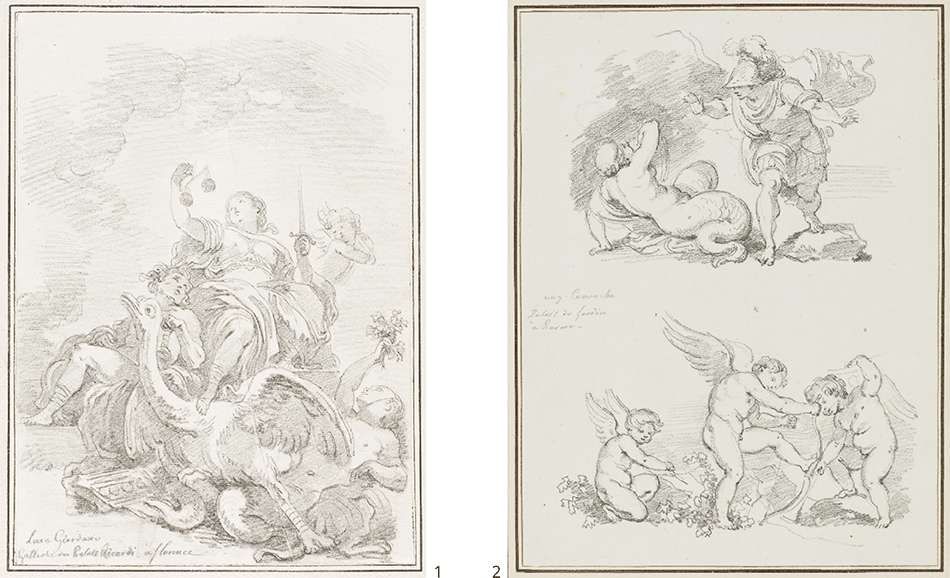 1. Jean-Honoré Fragonard (French, 1732–1806), Study after Luca Giordano: Triumph of Justice (from the Palazzo Medici Riccardi, Florence), 1760–61, Black chalk on paper, overall: 11 3/8 in x 8 1/4 in, The Norton Simon Foundation2. Jean-Honoré Fragonard (French, 1732–1806), Study after Agostino Carracci: The Battle Against Vice (above), Three Putti (below) (from the Palazzo Ducale, Parma), 1760–61, Black chalk on paper, sheet: 13 x 17-3/4 in. (33.02 x 45.01 cm), The Norton Simon Foundation
1. Jean-Honoré Fragonard (French, 1732–1806), Study after Luca Giordano: Triumph of Justice (from the Palazzo Medici Riccardi, Florence), 1760–61, Black chalk on paper, overall: 11 3/8 in x 8 1/4 in, The Norton Simon Foundation2. Jean-Honoré Fragonard (French, 1732–1806), Study after Agostino Carracci: The Battle Against Vice (above), Three Putti (below) (from the Palazzo Ducale, Parma), 1760–61, Black chalk on paper, sheet: 13 x 17-3/4 in. (33.02 x 45.01 cm), The Norton Simon Foundation
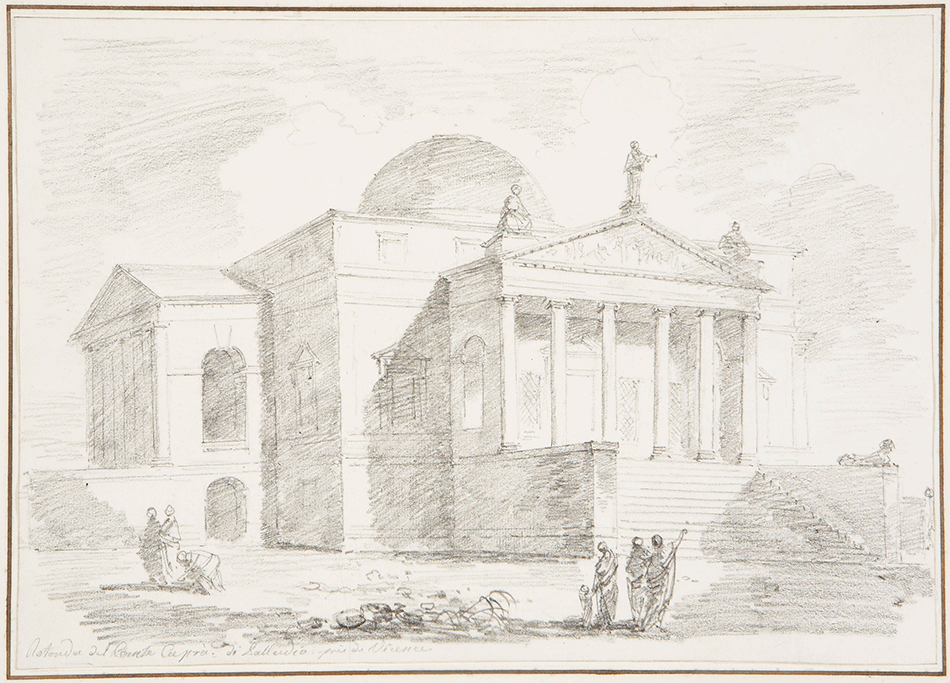 Jean-Honoré Fragonard (French, 1732–1806), Study after Andrea Palladio: Villa Rotunda, Vicenza, 1760–61, Black chalk on paper, 17-3/4 x 13 in. (45.1 x 33.0 cm), The Norton Simon Foundation
Jean-Honoré Fragonard (French, 1732–1806), Study after Andrea Palladio: Villa Rotunda, Vicenza, 1760–61, Black chalk on paper, 17-3/4 x 13 in. (45.1 x 33.0 cm), The Norton Simon Foundation
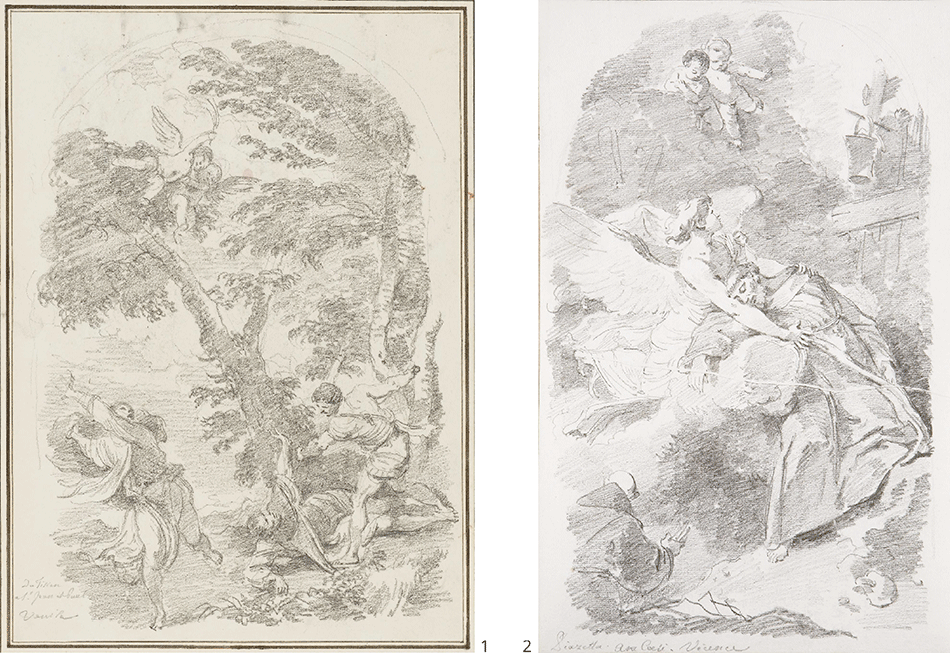 1. Jean-Honoré Fragonard (French, 1732–1806), Study after Titian: Martyrdom of St. Peter of Verona (from Santi Giovanni e Paolo, Venice), 1760–61, Black chalk on paper, 17-3/4 x 13 in. (45.1 x 33.0 cm), The Norton Simon Foundation
1. Jean-Honoré Fragonard (French, 1732–1806), Study after Titian: Martyrdom of St. Peter of Verona (from Santi Giovanni e Paolo, Venice), 1760–61, Black chalk on paper, 17-3/4 x 13 in. (45.1 x 33.0 cm), The Norton Simon Foundation
2. Jean-Honoré Fragonard (French, 1732–1806), Study after Giovanni Battista Piazzetta: St. Francis in Ecstasy (from the Aracoeli, Vicenza), 1760–61, Black chalk on paper, sheet: 13 x 17-3/4 in. (33.02 x 45.01 cm) The Norton Simon Foundation
Curator: Gloria Williams Sander
Link to the article about the Exhibition at the National Gallery of Art:
“FRAGONARD: THE FANTASY FIGURES”
Lectures
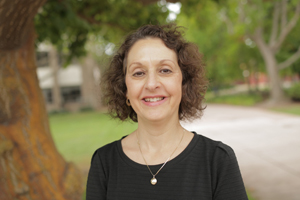 Lecture: The Grand Tour from the Mundane to the Sublime
Lecture: The Grand Tour from the Mundane to the Sublime
Speaker: Carole Paul, Director of the Undergraduate Program in Museum Studies, University of California, Santa Barbara
Date: Saturday, September 26, 2015. Time: 4:00 pm – 5:00 pm
One of the biggest attractions of the Grand Tour’s culmination in Italy was the wealth of great art and architecture that visitors could enjoy in various ways. Elite travelers practiced their connoisseurship skills while viewing Renaissance and Baroque paintings in palaces; scholars considered the historical importance of antiquities at villas and other sites; and artists, like Jean-Honoré Fragonard, copied and drew inspiration from all they saw before them. Carole Paul explores the role that viewing art played in life on the Grand Tour, considering both its sublime pleasures and the more mundane impediments that visitors sometimes encountered in gaining access to the objects of their interest. Photo by Spencer Bruttig
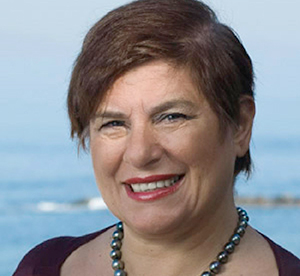 Lecture: The Voyages en Italie: French Travel Literature and the Grand Tour Imagination
Lecture: The Voyages en Italie: French Travel Literature and the Grand Tour Imagination
Speaker: Clorinda Donato, George L. Graziadio Chair of Italian Studies and Professor of French and Italian, California State University, Long Beach
Date: Saturday, October 10, 2015 Time: 4:00 pm – 5:00 pm
As tourists flocked to Italy in ever-growing numbers in the 18th century, they increasingly sought advice, recommendations and reflections on the Grand Tour experience. As Europe’s lingua franca, French dominated the Italian travel-account market. Over fifty travel narratives were published in French, many appearing in multiple editions. This lecture highlights the most popular of those accounts, or voyages, and their strategies for acquiring pleasure and knowledge on the Italian Grand Tour.
Events
Date: Saturday, October 24, 2015, Time: 1:00 pm – 2:00 pm, Speaker: Educator, Type: Tour.
Link to: Events information
Fragonard’s Enterprise:
The Artist and the Literature of Travel Exhibition
July 17, 2015 – January 04, 2016
Monday, 12:00 p.m. to 5:00 p.m. Tuesday Closed. Wednesday, 12:00 p.m. to 5.00 p.m.
Thursday, 12:00 p.m. to 5:00 p.m. Friday, 11:00 a.m. to 8:00 p.m.
Saturday, 11:00 a.m. to 8:00 p.m. Sunday, 11:00 a.m. to 5:00 p.m.
Phone: 626.449.6840, 411 W. Colorado Boulevard, Pasadena, CA 91105-1825.
http://www.nortonsimon.org/
About the Norton Simon Museum
The Norton Simon Museum is known around the world as one of the most remarkable private art collections ever assembled. Over a 30-year period, industrialist Norton Simon (1907–1993) amassed an astonishing collection of European art from the Renaissance to the 20th century, and a stellar collection of South and Southeast Asian art spanning 2,000 years. Modern and Contemporary Art from Europe and the United States, acquired by the former Pasadena Art Museum, also occupies an important place in the Museum’s collections. The Museum houses more than 12,000 objects, roughly 1,000 of which are on view in the galleries and gardens. Two temporary exhibition spaces feature rotating installations of artworks not on permanent display.